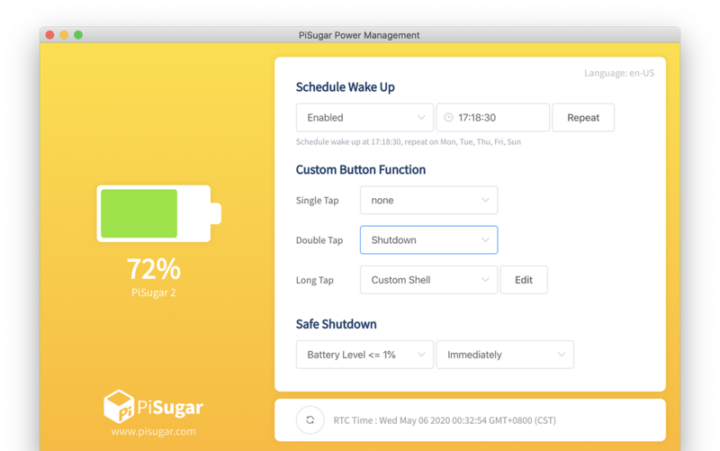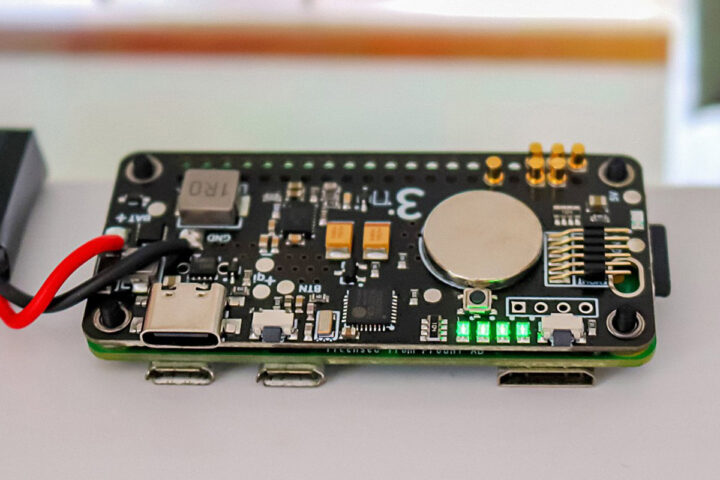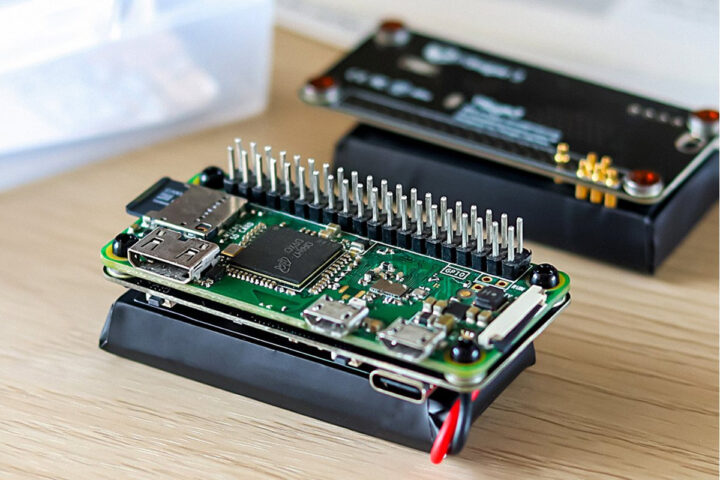PiSugar Kitchen’s PiSugar3 is a compact Raspberry Pi UPS module with integrated power management features that make Raspberry Pi Zero boards portable. This new module is an upgraded version of the PiSugar S and PiSugar S Pro, which we previously wrote about. The PiSugar S features a compact 1,200mAh battery for Raspberry Pi Zero, and the PiSugar S Pro comes with a 5,000mAh battery for Raspberry Pi 3/4.
The PiSugar3 adds new features to these models with upgrades including an RTC, and a fully functional UPS functionality with customizable wake-up options. It also includes an anti-mistaken touch switch to avoid accidental shutdowns, a software watchdog, and hardware battery protection to extend battery longevity. The UPS module gets attached to the bottom of the Pi and there are pogo pins on the UPS module that deliver the power while the GPIO pins of the Pi remain free for other tasks, on top of that I2C communication and dedicated software provide advanced control, and added functionality. With these upgrades, the PiSugar3 is ideal for those looking to easily and reliably power portable Raspberry Pi projects.
PiSugar3 UPS module Specifications:
- Compatibility – Raspberry Pi Zero, Raspberry Pi Zero W/WH, Raspberry Pi Zero 2 W
- UPS Features – Full UPS functionality with multiple wake-up options
- Interface
- I2C with configurable address (0x57/0x68)
- Pogo pin design for unobstructed GPIO access
- USB – USB Type-C port for charging
- Misc
- RTC (Real-Time Clock) – Onboard with write protection
- Anti-mistaken touch switch to prevent accidental shutdowns
- Software watchdog for automatic system restarts
- Hardware battery protection to enhance cycle life
- Soft shutdown support with hardware notification
- Power
- Output Current – Up to 3A
- Battery Capacity – 1,200 mAh
- Battery Life – 8–10 hours (depending on usage)
- Dimensions – 65 x 30mm (Same as Raspberry Pi Zero, Zero W/WH)

The company mentioned that this PiSugar3 Raspberry Pi UPS module works straight out of the box, with no software requirements, However, to get the most out of the upcoming PiSugar3 you need to install the PiSugar power manager, and then you can access it through the browser webpage. You can simply run the command below and after that, you can manage the battery by visiting http://<IP_address>:8421 in your browser.
|
1 2 |
wget https://cdn.pisugar.com/release/pisugar-power-manager.sh bash pisugar-power-manager.sh -c release |
You can find more hardware and software-related information on the company’s GitHub repo. While checking the GitHub repo I noticed there is very little information about the board called PiSugar3 Plus but I think it’s an upcoming product of there’s so not much information is present at the time of writing, but one thing they mentioned is that it will have support for a larger 5,000mah battery.
We covered various UPS Hat for Raspberry Pi boards over the years including the SB Components UPS HAT, the Waveshare UPS HAT (E), the SunFounder PiPower 3 kit, and SupTronics Raspberry Pi 5 UPS HAT X1202 V1.1 among others. Feel free to check those out if you are looking for more options.
The PiSugar3 Raspberry Pi UPS module costs $39.99 on Amazon, AliExpress, or Tindie. In the package, you will have the UPS module with the battery and four screws.
Debashis Das is a technical content writer and embedded engineer with over five years of experience in the industry. With expertise in Embedded C, PCB Design, and SEO optimization, he effectively blends difficult technical topics with clear communication
Support CNX Software! Donate via cryptocurrencies, become a Patron on Patreon, or purchase goods on Amazon or Aliexpress







